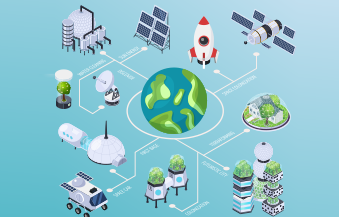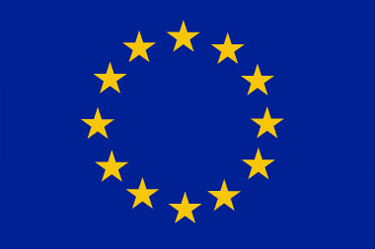Surviving Space: Space Weather
This activity is available in more languages:
|
|
|
|
|
|
|
|
|
Background Information: 
Brief Description: Students will follow a guide to predict space weather events and then look for aurora as evidence of these events.
How does the lesson relate to STEAM education: This activity may be explored as science inquiry and uses the technological tool of current real-time images of the Sun and measurements of the near-earth space environment.
Age Range: 13 – 18
Didactical Hours: 75 min, which can be spread out over several lessons.
Learning objectives: The students will:
- follow a guide to make a space weather prediction
- use current images of the Sun to describe sunspots and magnetically active regions.
- interpret spacecraft data presented as graphs
- evaluate their prediction by comparing to actual space weather events
Relation to the Big Ideas of Science:
Energy> Energy and forces> Electric and magnetic energy: Charged particles that make up the solar wind can act upon the Earth’s magnetic field. Coronal mass ejections carry plasma and magnetic energy.
Energy > Energy and forces > Electromagnetic radiation and radiant energy: Solar flares are the release of huge amounts of energy as flashes of visible light or X-rays.
Forces > Types of Interactions > Electromagnetism and its effect: Charged particles that make up the solar wind can act upon the Earth’s magnetic field.
Universe > Earth and the solar system > Earth, Sun and the moon: Space weather can be caused when the particles carried by the solar wind - bits of plasma from the Sun, enter the Earth’s magnetosphere.
Earth > Earth materials and structure > Earth’s Atmosphere: Auroras occur in the upper part of the Earth’s atmosphere.
The Polar Star consortium is grateful for the input of the Star Advisors, who helped to choose the star topics. We would like to thank warmly Star Advisors who provided valuable ideas and materials for this particular activity: Karen Billingham, Christian Collette, Maria Conceição Manaia, Paula Galvin, Maire Goggin, Gearóid Kelleher, Daniela de Paulis, Vivian White, Emilio Zuniga.
Access the downloadable version > Access the online version >
Nike Air Jordan Amarillas y Negras por 64 | 95€, Oferta, tiffany dunk high bot | Envío Gratis | Wiz Khalifa Spotted in Air Tokyo Jordan III Black Cement
About
POLAR STAR aims to bring together state-of-the-art learning pedagogies and combine them with exciting activities that focus on contemporary science, thus helping teachers to introduce STEAM successfully in their class. At the same time the project will focus on the development of students’ key skills and competences as well as deepening their knowledge of fundamental science principles, increasing their appreciation of science and technology and their role in todays’ societies. POLAR STAR aims to offer an open and innovative training framework to teachers of primary and secondary education which will focus on:
- Promoting the 'Science as a Whole' concept;
- Promoting a holistic STEM educational approach;
- Promote the introduction of contemporary science activities in schools;
UPCOMING POLAR STAR COURSES
Related projects
LATEST NEWS
-
31 Oct 2022
-
18 Jul 2022











